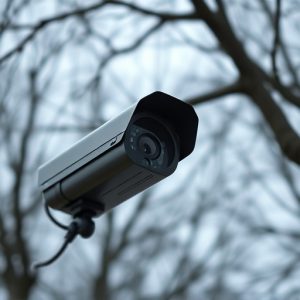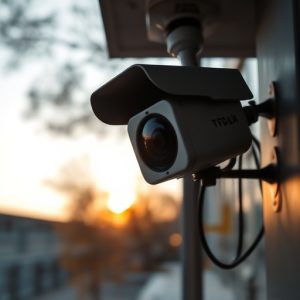Disguised Camera Detection: Unveiling Secrets of Hidden Nanny Cams with Night Vision
Hidden Nanny Cams with night vision, disguised as everyday items, offer discrete surveillance but ra…….
Hidden Nanny Cams with night vision, disguised as everyday items, offer discrete surveillance but raise serious privacy concerns. These cameras, equipped with advanced infrared technology, capture clear images in low light and can be detected using specialized software that analyzes shadows and light patterns. While powerful for security, their use requires explicit consent and navigates legal and ethical dilemmas regarding individual privacy.
Unveiling hidden threats in our daily lives has become a critical concern, especially with the proliferation of sophisticated technology. This article delves into the world of hidden nanny cams and night vision technology, exploring their identification through light patterns. We dissect the science behind these methods, offering insights into practical implementation, testing, and detection. Additionally, we examine legal considerations and privacy implications associated with disguised cameras, providing a comprehensive guide to understanding this modern-day enigma.
- Understanding Hidden Nanny Cams and Night Vision Technology
- The Science Behind Light Patterns for Identification
- Practical Implementation: Testing and Detection Methods
- Legal Considerations and Privacy Concerns with Disguised Cameras
Understanding Hidden Nanny Cams and Night Vision Technology
Hidden Nanny Cams, also known as covert cameras or hidden surveillance devices, are a sophisticated way to capture footage discreetly. These tiny yet powerful tools can be concealed in various everyday objects like clocks, plants, or even light fixtures, making them virtually unnoticeable. The primary purpose of such devices is to provide remote monitoring and security, often used by parents to keep an eye on their children’s activities or employers to ensure employee integrity.
Night Vision technology plays a crucial role in the effectiveness of Hidden Nanny Cams. With low-light imaging capabilities, these cameras can capture clear images even in complete darkness, thanks to advanced infrared (IR) lighting. This feature allows for 24/7 surveillance, ensuring that critical moments are not missed. The combination of hidden placement and night vision technology makes it a game-changer for security and privacy monitoring, offering peace of mind in various settings, be it at home or in the workplace.
The Science Behind Light Patterns for Identification
The unique patterns of light, particularly in the realm of night vision technology, offer a fascinating method for identifying hidden devices like nanny cams. This science leverages the fact that every camera, regardless of its location or make, casts a distinct shadow or reflects light in its surroundings. By analyzing these patterns, specialized software can detect and differentiate between cameras, even when they are disguised or concealed.
Imagine a hidden nanny cam hidden within a room, its lens cleverly obscured. The software, armed with advanced algorithms, can still identify the presence of this device by studying the way light interacts with its surroundings—a subtle shift in shadows or a reflection that reveals its true nature, even under conditions where human eyes might struggle to discern any difference. This technology is a game-changer for security, enabling us to uncover nanny cams and other hidden surveillance equipment in a variety of settings.
Practical Implementation: Testing and Detection Methods
In practical implementation, testing hidden nanny cams, or any form of disguised camera, requires a multi-faceted approach. The first step involves deploying the cameras in various environments with different lighting conditions, focusing on scenarios where night vision capabilities are essential. This includes outdoor settings during twilight hours and indoor spaces dimly lit by artificial lights, simulating real-world use cases for hidden nanny cams.
Detection methods play a pivotal role in identifying these covert devices. Advanced image processing algorithms, coupled with thermal imaging technology, can analyze visual feeds for anomalous patterns indicative of hidden cameras. Night vision capabilities further enhance the sensitivity, allowing for the detection of heat signatures and subtle variations in light that might go unnoticed to the human eye. Regular testing against a database of known camera models ensures the system’s effectiveness in identifying new or modified devices.
Legal Considerations and Privacy Concerns with Disguised Cameras
The use of disguised cameras, particularly hidden nanny cams with night vision capabilities, raises significant legal and privacy considerations. In many jurisdictions, surreptitiously recording individuals or activities without their knowledge is a breach of privacy laws and can result in severe penalties. The installation of these devices must comply with data protection regulations, ensuring explicit consent from the subjects being monitored.
Privacy concerns extend beyond legal repercussions. Hidden cameras can invade personal spaces, eroding trust and fostering an atmosphere of surveillance. With advancements in technology, these devices become increasingly accessible, posing a challenge to maintaining a balance between security measures and individual freedoms. It is crucial for users to understand their legal obligations and the potential impact on privacy when employing hidden nanny cams or any form of disguised camera technology.
Hidden Nanny Cams equipped with night vision technology have raised concerns about privacy and ethical boundaries. Understanding the science behind light patterns for identification offers a powerful tool for detection, as discussed in this article. While practical implementation and legal considerations are crucial, continued research and open dialogue can help balance security needs with individual privacy rights, ensuring a safer yet more transparent digital landscape.


